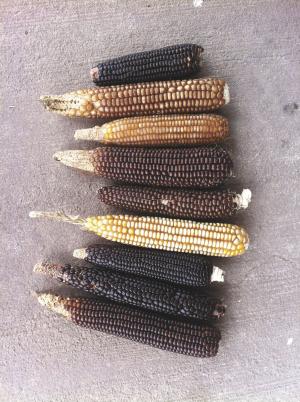2013 - Volume #37, Issue #3, Page #20
[ Sample Stories From This Issue | List of All Stories In This Issue | Print this story
| Read this issue]
Oldest U.S. Corn Making A Comeback
 |
With renewed interest in local foods and heritage seeds, farmers and organizations in that region are growing Chapalote again and discovering that itís a variety worth saving.
ďIt has a number of interesting features,Ē says Chris Schmidt, Ph.D., Director of Conservation for Native Seeds/SEARCH. ďItís very drought tolerant so itís good in arid regions. Itís productive, nutritious and delicious, with a unique brown color.Ē
Because itís a flint corn, Chapalote kernels can be popped, but they tend to be very crunchy. Itís usually toasted, then ground into flour.
ďTraditionally it was eaten raw as trail food,Ē Schmidt says. ďItís delicious and has a nice sweetness and smokiness. People also bake with it.Ē
Native Seeds/SEARCH received a grant to work with growers to increase the seed base and experiment with best growing methods. Theyíre doing similar studies with White Sonora wheat brought into the U.S. in the late 17th Century by Spanish missionaries.
ďThe idea is to have a more sustainable and more resilient agricultural system based on arid-adapted crops,Ē Schmidt notes.
Arizona gardeners interested in growing Chapalote should contact Native Seeds/SEARCH about packets and bulk quantities of seed available for sale.
Contact: FARM SHOW Followup, Chris Schmidt, Native Seeds/SEARCH, 3584 E. River Rd., Tucson, Arizona 85718 (ph 520 622-0830; www.nativeseeds.org).

Click here to download page story appeared in.

Click here to read entire issue
To read the rest of this story, download this issue below or click here to register with your account number.




